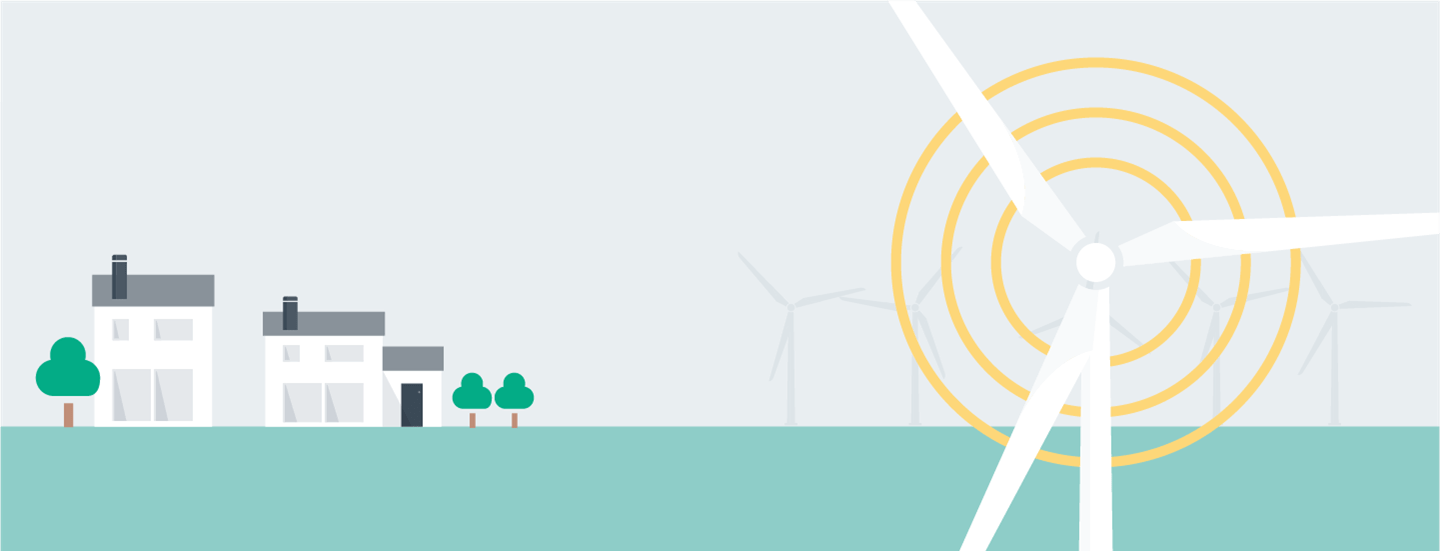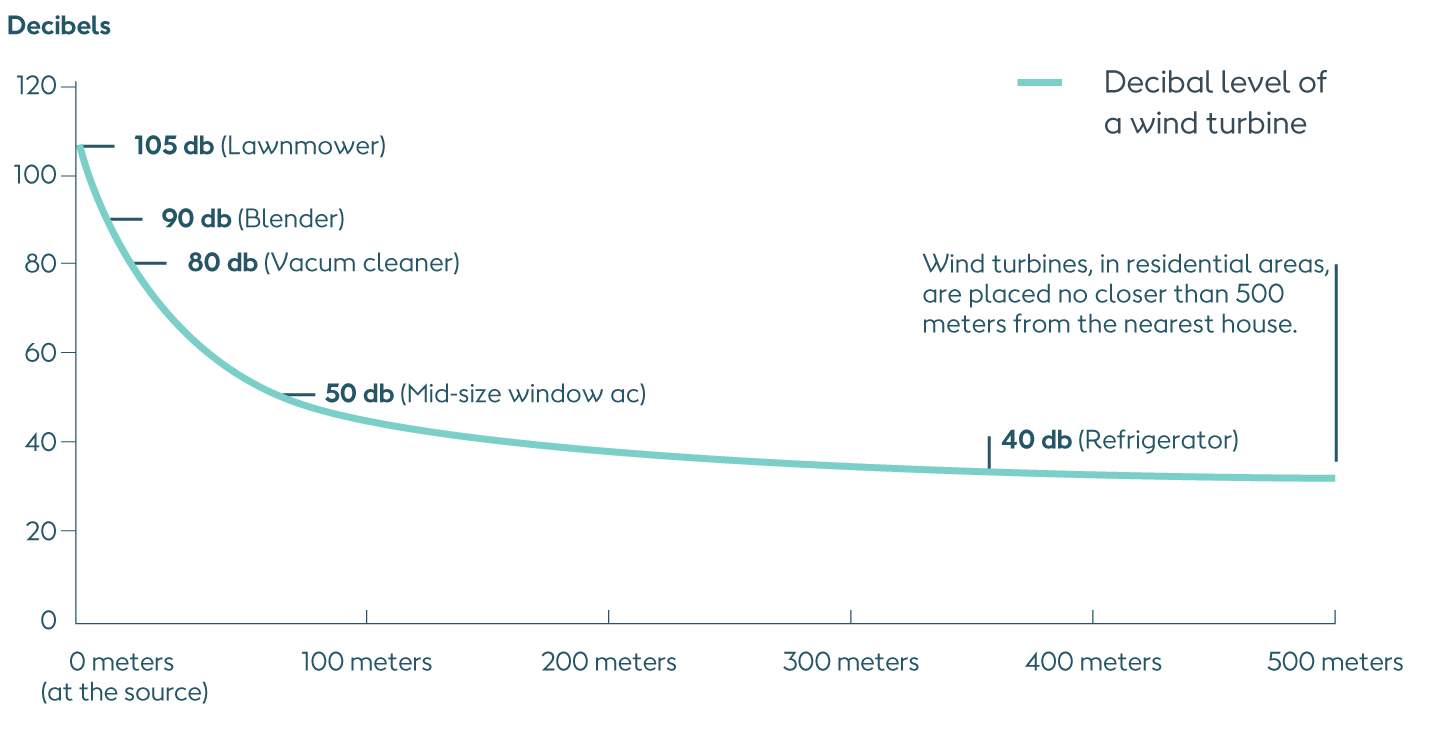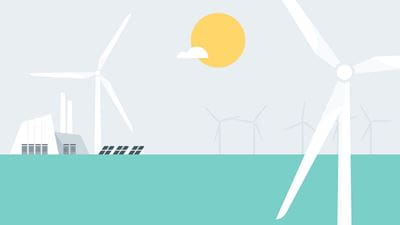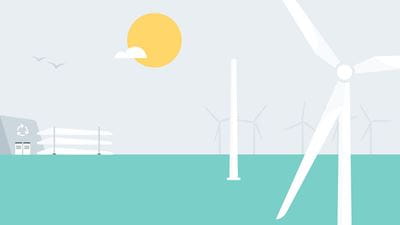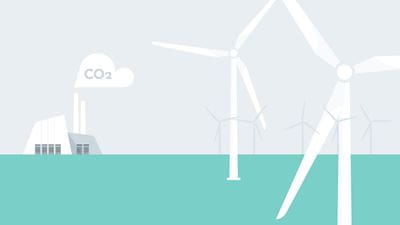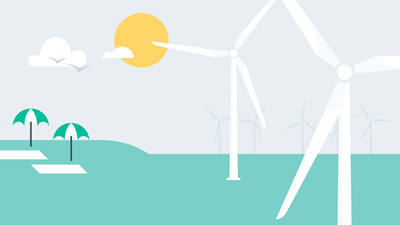Assessment & action
While wind turbines produce low-level sound, studies have shown that the noise from wind turbines does not have negative health impacts at a safe distance.
There is, according to a comprehensive review of environmental noise guidelines for Europe published by the World Health Organisation in 2018, very little evidence available showing adverse health effects of continuous exposure to wind turbine noise. 1
Furthermore, the WHO estimate the “burden on health from exposure to wind turbine noise at the population level to be low.”2
Background noise monitoring and extensive studies are carried out when wind farms are planned to identify the best location for turbines, so that sites are designed to minimise or eliminate any potential disruptions to residents.
At Ørsted, as part of the development of an onshore wind farm project, we always conduct an Environmental Impact Assessment (EIA) and prepare an Environmental Impact Assessment Report (EIAR).
Through that process we identify any potential noise sensitive locations and design the layout of the turbines to minimise noise levels.
We adhere to Ireland’s Wind Energy Guidelines which specify that wind turbine noise should not exceed 45 decibels at sensitive receptors.
Due to strict limitations in Ireland, the closest that a wind turbine can be built to a house is 500 metres. At that distance, noise levels drop to about 35-45 dB.
However, recent projects in Ireland have placed a setback distance of 700 to 800 metres between turbines and residential properties to assure that noise levels are reduced at nearby properties as much as possible.
